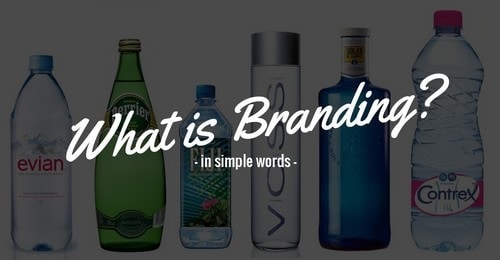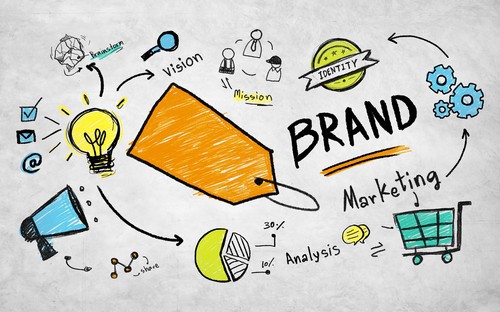Branding is the process involved in creating a specific and unique identity, name, and image of the company or the product in the market and in the minds of the consumers through the various marketing, advertising, and promotional campaigns having a consistent theme and a message.
The main objective of branding is to establish a significant and distinguished presence in the market and the industry as a whole that attracts loyal customers and retains them.
Table of Contents
Benefits of Branding
1. Competitive Advantage
When the branding is done right by the management and the marketing department of the company taking care of the detailed and intricate factors such as what is the brand positioning and brand strength of the competitors in the market, what are their unique selling propositions, frequency of their branding, marketing, and promotional activities, and the tastes and preferences of the target market along with various other related studies and research; the rational and authentic branding plan and map is designed and executed that gives a competitive advantage to the company.
2. Customer Recognition
The concept of branding involves participation in the various promotional events, exhibitions, trade shows, and various other occasions that work for the benefit of the brand and the company.
Plus the other marketing activities such as hoardings and signage’s displays, radio advertisements, print advertisements, and television commercial amongst others with a 360 degree marketing approach culminates a recall factor in the minds of the consumers with the constant and consistent messaging resulting in the fact that the consumer recognizes the brand after looking at the logo, tagline, brand colors, and other such creative elements that represent the brand and its offerings.
3. Customer Loyalty
The thumb rule of marketing says that the branding activities have to be consistent in nature and the process to mark and develop a market presence for the company and stay ahead of the competition.
And once the brand and its elements gets registered in the minds of the consumer and he or she indulges into the repeat purchases and endorses the brand to his or her friends and family and plus experiences the excellent levels of customer service and witnesses the brand ruling the market with the marketing and promotional activities, there is an elevated level of loyalty and affinity developed in his or her mind.
4. Easy to introduce the new line of products
When the brand is successful in capturing one specific market and its target audience through its branding and marketing techniques developing a name and fame in the industry with the competitive edge, it is easier for the company to launch the new line products in the same as well as the new and untapped markets as there a certain level of confidence and agility to the brand as it has now carved a niche in the industry.
5. Higher sales and profit margins
As mentioned earlier, that branding is a continuous and consistent process as it is necessary to be present in the customer’s sight as well mind and with the targeted activities and promotional tools.
The consumers are well aware of the brand, its fundamentals, values, strengths, and the USP’s that has a direct result on the consumers buying the products and services of the brand on the repeat mode thereby attaining the higher amount of sales and profit margins.
13 Main Types of Branding
1. Product Branding
The concept of product branding is quite different from the corporate branding as here the main aim of the company is to promote the newly launched product in the market in the minds of the consumers creating an emotional connection so that the weekly, monthly, quarterly, and yearly sales targets are accomplished.
The company indulges into the various marketing activities such as advertisements in the television, newspapers, magazines, periodicals, social media, hoardings, signage’s, and host of other above the line and below the line campaigns are undertaken to create awareness in the market amidst the cut-throat competition. Various FMCG and retail companies take the route of product branding to promote their products that are fast moving and have a limited shelf life.
2. Corporate Branding
The concept of corporate branding can be described as when the company is new in the industry and wants to promote itself as a corporate firm with its values, objectives, fundamentals, business ethos, and objectives to curate a distinctive identity in the market and an industry as a whole. It has a direct benefit to the sales of the products and services offered by the company as once the objectives of corporate branding are established, the consumers will definitely wish to try out the offerings by the company.
For the successful corporate branding, sponsoring various events related to the brand, social media promotions, and PR exercises are a must for the company. The concept is also applicable to the established companies as well that want to rebrand themselves in the market due to the changing business dynamics, evolving tastes of the consumers, and the growing competition.
3. Personal Branding
The concept of personal branding is usually opted and followed by the politicians, movie stars, sportsmen, socialites, and any person who has and enjoys a celebrity status in the market. Right from the presence on the social media channels such as Facebook, Instagram, Linked In, Twitter, and others along with the right measures by the PR firms is quite necessary to create a successful personal branding. Once the celebrity is successful with his or her personal branding, he or she gets signed up as a brand ambassador for the various successful brands representing their company, products, and services.
4. Cultural Branding
The theory of cultural branding is done by the travel and tourism companies when a specific culture of any city, region, or a country is to be promoted to the target market and the target audience. Similar is the case of the geographic branding, where a specific country, city, or region is marketed and promoted.
5. Co-branding
Co-branding is the case when there is a usage of two or more brands on one specific product with an objective to design a high quality and high-performance product.
6) Service branding
Similar to product brands, but it involves adding perceived value to the services as well. It is quite difficult in some ways than developing a product brand because the offering itself is less tangible in nature. Useful in areas such as professional services it enables the marketers to avoid competing for skill v/s the skill that is hard to prove and often revolves around a price argument by associating their brand with emotions of the customer.
5) Investor branding
Normally this type of Brand Classification is applied to publicly listed brands and to the investor relations functions. It positions the listed entity as an investment and as a performance stock, blending financials and strategy with aspects such as value proposition, purpose, and, increasingly, wider reputation via the facet of Corporate Social Responsibility. As Mike Tisdall will tell you, a strong investor brand delivers share price resilience and an informed understanding of value in the market.
6) NGO (Non-Governmental Organization) or Non-Profit branding
This sector specifically shifts gears looking for value models beyond just fundraising to drive social missions in the fraternity of business. This Brand Classification is not accepted by some in the non-profit communities because it is seen as selling out.
7) Public branding
It is also known as government branding and many would argue that you cannot brand something that doesn’t have consumer choice and a competitive model attached to it in its overall nature. That is not to say that you cannot use the disciplines and methodologies of brand strategy to add to stakeholders’ understanding and trust of government entities in the industry. That’s why I talk about the need for public entities to develop trademarks rather than brands.
8) Activist branding
It is also known as a purpose brand. This type of Brand Classification is synonymous with a cause or purpose to the point where the alignment defines its distinctiveness in the minds of consumers and market as a whole. Classic examples are Body Shop, which has been heavily defined by its anti-animal-cruelty stand; and Benetton, which confronts bigotry and global issues with an intensity that has made it both hated and admired in the industry.
9) Ethical branding
It is used in two ways. The first as a description of how brands work, specifically the practices they use and the commitments they demonstrate in areas such as worker safety, fulfilling CSR, and more defining that a brand is ethical or it is not?. Secondly, it denotes the quality marquees that consumers look for in terms and attributes of reassurance that the brands they choose are responsible. Perhaps the most successful and famous example of such a brand is Fairtrade.
10) Celebrity branding
It can be defined and classified as to how the famous personalities commercialize their high profile status using combinations of social media delivered content, appearances, products promotions, and gossip columns to retain the interest of their followers. The business model for this has evolved from appearances in product promotion ads and now takes a range of forms such as licensing, brand endorsements, brand ambassador roles and increase brand association through various placements.
11) Ingredient branding
The component brand that adds to the value of another brand because of what it brings is known as the Ingredient brand. Famous examples include Intel and Teflon. Compared with OEM offerings in the manufacturing sector where a component is a white label and simply forms an integral part of the supply chain, ingredient brands are the featured elements that add to the overall value proposition of the product. A key reason for this is that they market themselves to consumers as elements to look for and consider when making a purchase decision.
12) Global branding
The global brands are easily recognized and widely dispersed all over the world. They epitomize household names and their business model is based on the aspects of familiarity, availability, and stability although the consistency that once characterized their offerings, and ruled their operating models is now increasingly under threat as they find themselves making changes, subtle and otherwise, to meet the cultural tastes and expectations of people in different regions of their operations.
13) Luxury branding
Prestige and luxury brands that deliver social status and endorsement to the consumer are quite famous amongst the specific segment of the society. Luxury brands must negotiate the fine line between exclusivity and reality in nature of their offerings. They do this through the factors of quality, association, and story. These brands have perfected the delivery of image and aspiration to their markets, yet they remain vulnerable in nature to shifts in perception and consumer confidence and they are under increasing pressure from “affordable luxury” brands available to the customers.
Liked this post? Check out the complete series on Branding




Thank you for sharing this post. It is very informative. So much information to take in.Thank you for sharing this post. It is very informative. So much information to take in.